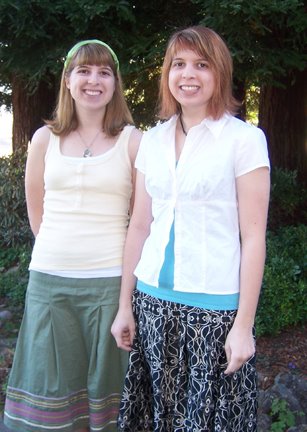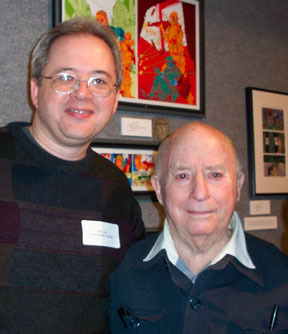Last weekend I read a Q&A column by
San Francisco Chronicle movie critic Mick LaSalle, in which a reader asked why modern film actresses don't get the same loving attention to lighting and cinematography that, for example, Von Sternberg lavished on Marlene Dietrich. The reader asked, "What's missing?"
"Black and white is what's missing," LaSalle replied. "The denial of something essential (like color) creates a longing in the viewer, which translates into an arresting image."
I think exactly the same thing happens in cartooning. It's all about "the denial of something essential," distilling characters and situations into the fewest words and lines possible--just enough to communicate an idea. When information is missing, readers fill in the rest--they
yearn to fill in the rest--and the less the cartoonist gives them, the more invested they can become. Paradoxically, the more abstract a story, the more real it can seem. Somehow, a few squiggles of ink become a boy waiting by a mailbox for a Valentine's Day card that never comes. A few squiggles of ink can make you happy or sad. That's amazing.
I've mentioned this before, but I got a modest glimpse of this with
Mom's Cancer when I heard from a few readers who said, "I'm not like you, my family's not like yours, and we weren't dealing with cancer, but it's just like you were in our living room." None of the details fit but somehow it still hit home in a way that felt very specific. That's also amazing.
Even more than black-and-white film, I think cartooning demands that its readers do their share the heavy lifting. That's one reason the characters in
Mom's Cancer didn't have names: if I don't tell you what they're called, maybe their name is the same as yours. That's also why my editor and I didn't want to put a family photo in the book: it would've turned those abstract characters who maybe sort of resemble you and your family into real people who don't look anything like you at all. The more details I give, the more opportunities you have to find differences between us. I've thought a lot about how and why cartooning sometimes seem to tap directly into a reader's brain, and I think that's close.
I really like LaSalle's "denial of something essential" formulation. Of course for that to work, you also have to
provide something essential and meet the audience half way. Otherwise, you've denied them too much to make any connection with the work at all. I think that's the difficult and rewarding (when it works) give-and-take conversation that the best writers, artists and cartoonists have with their readers or viewers.
.
 Laura and Robin
Laura and Robin .
.

 That's a picture of the Earth and Moon as seen from the planet Mars. Frankly, I didn't know we had anything in the Martian neighborhood with optics good enough to take a shot like that, and at first suspected it was a fake. But
That's a picture of the Earth and Moon as seen from the planet Mars. Frankly, I didn't know we had anything in the Martian neighborhood with optics good enough to take a shot like that, and at first suspected it was a fake. But 


